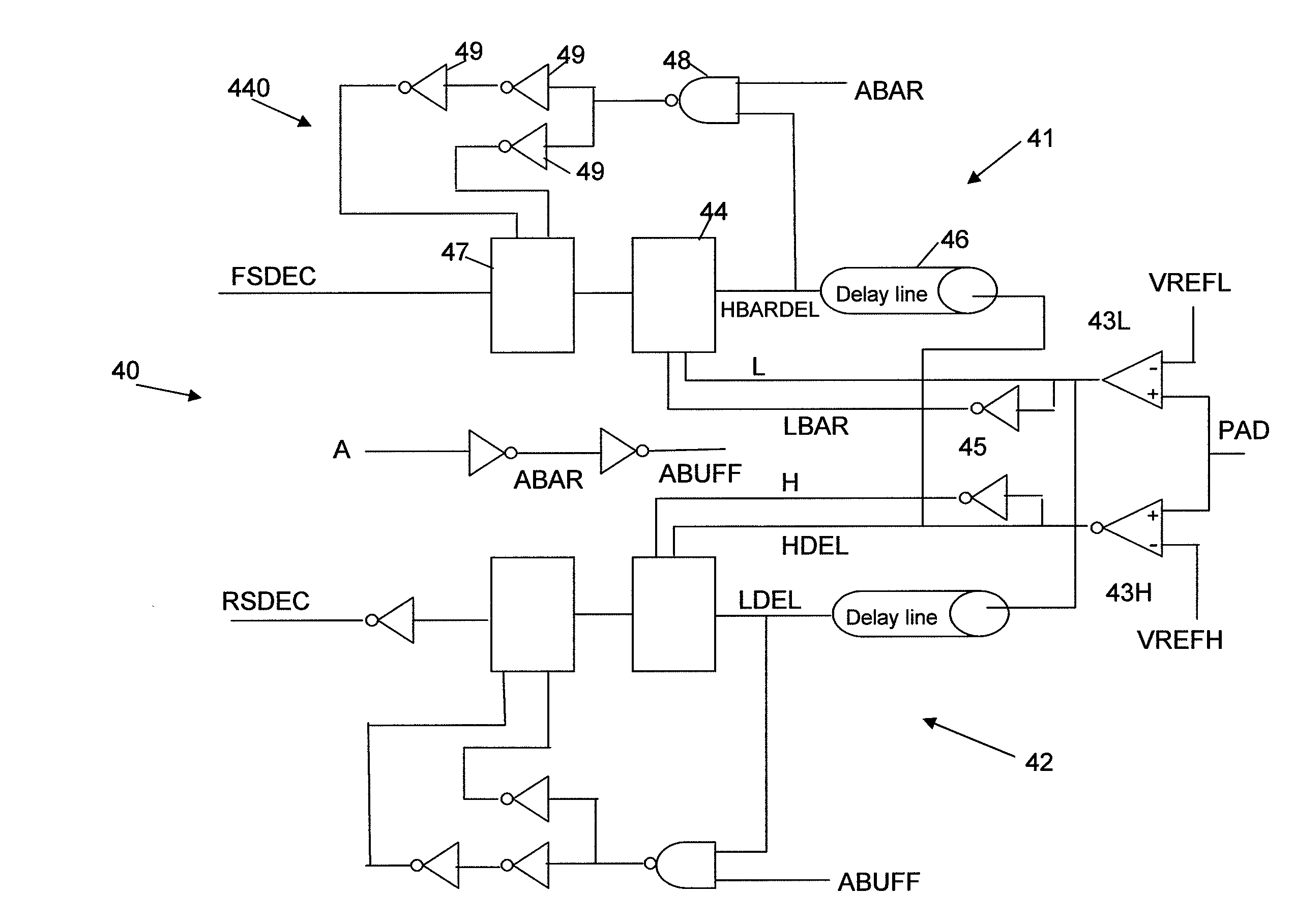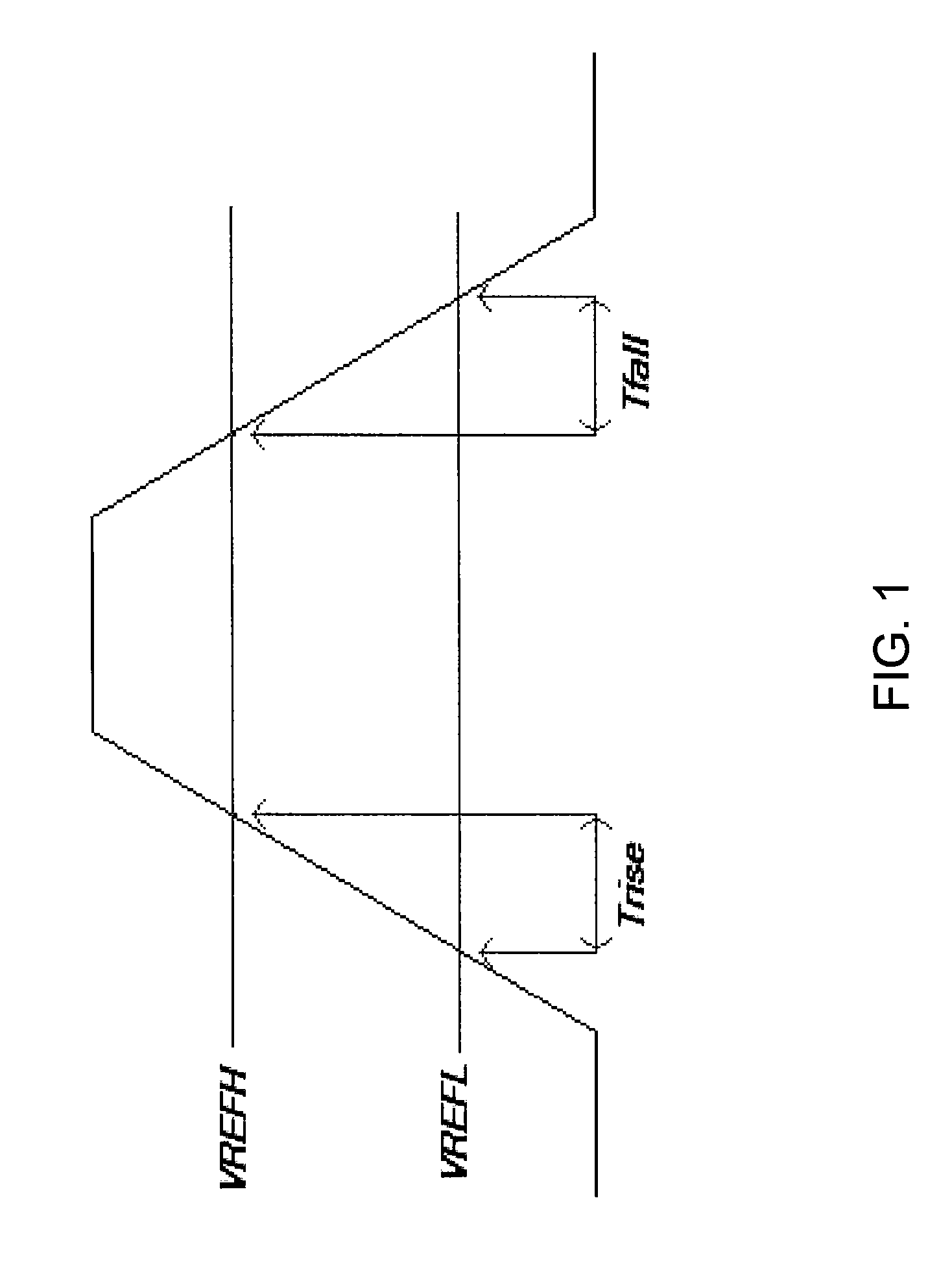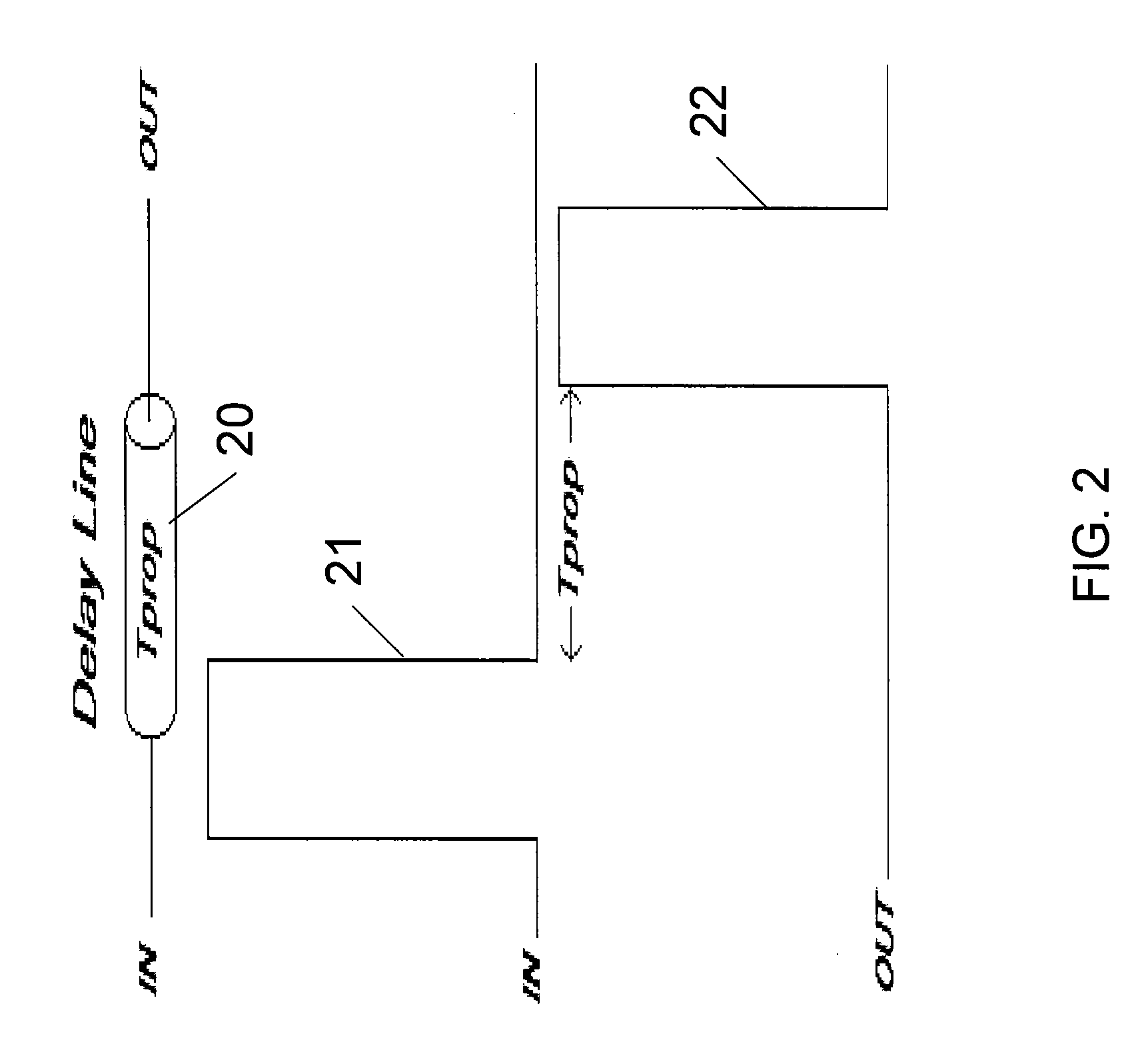Time Based Driver Output Transition (Slew) Rate Compensation
a driver output and transition rate technology, applied in the field of minimization of driver output slew rate variation, can solve the problems of unfavorable timing and signal integrity implications of optimal edge rate, unfavorable timing and signal integrity class, and unfavorable compensation
- Summary
- Abstract
- Description
- Claims
- Application Information
AI Technical Summary
Benefits of technology
Problems solved by technology
Method used
Image
Examples
Embodiment Construction
[0018]The invention is directed to a method and apparatus to effectively minimize driver output slew rate variation. In accordance with the invention, the slew of each driver can be directly measured and controlled.
[0019]While the prior art PVT Correlation technique discussed above provides a certain degree of output slew rate compensation, it has been demonstrated in practice that when tight tolerances are required, this technique simply cannot deliver the required accuracy. The inventors have found that the major flaw in the correlation technique is that the parameter of interest, driver output slew rate, is indirectly compensated instead of actually being both measured and controlled directly. According to the invention, the controlled parameter is the measured parameter, and the control of the parameter requires a near perfect reference and measurement technique.
[0020]In accordance with the invention, a circuit is provided to implement the technique to sample / measure, compare an...
PUM
 Login to View More
Login to View More Abstract
Description
Claims
Application Information
 Login to View More
Login to View More - R&D
- Intellectual Property
- Life Sciences
- Materials
- Tech Scout
- Unparalleled Data Quality
- Higher Quality Content
- 60% Fewer Hallucinations
Browse by: Latest US Patents, China's latest patents, Technical Efficacy Thesaurus, Application Domain, Technology Topic, Popular Technical Reports.
© 2025 PatSnap. All rights reserved.Legal|Privacy policy|Modern Slavery Act Transparency Statement|Sitemap|About US| Contact US: help@patsnap.com



